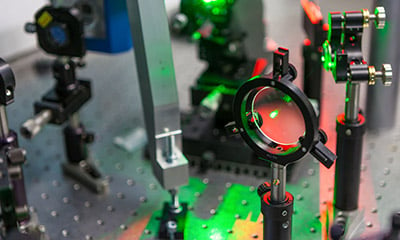Demand for Indium Phosphide Chips Driven by Communications and Consumer Electronics Applications
Indium phosphide (InP) has emerged as a critical semiconductor material, particularly in fabricating optoelectronic devices like lasers and sensors. Its unique properties, including high electron mobility and excellent optical characteristics, make it a preferred choice for applications demanding high performance.
By Seminex

The InP market continues to grow substantially, evolving from traditional datacom and telecom applications to encompass a broader spectrum, including consumer electronics. Yole Intelligence reports suggest that the InP market will expand from $2.5 billion in 2021 to approximately $5.6 billion by 2027, with consumer applications anticipated to be the primary driver. For example, Indium phosphide edge-emitting lasers have begun to replace GaAs VCSELs at 13xx-15xxnm wavelengths in mobile phones.
Several factors contribute to the escalating demand for SemiNex’s InP edge-emitting laser chips
High-Speed Data Transmission: The increasing need for fast and efficient data transmission in telecommunications and data centers has propelled the demand for InP, which is essential for high-bandwidth applications.
Optical Communication: The growing adoption of optical communication technology has further elevated the demand for InP diodes, which is crucial for their advanced optical properties.
5G Advancements: The deployment of 5G networks necessitates advanced semiconductor materials capable of handling high-frequency signals, with indium phosphide exhibiting excellent high-frequency performance.
Consumer Electronics: Proximity Sensors in Mobile Phones: Smartphone proximity sensors, are crucial for various functionalities. InP's direct bandgap and high electron mobility make it ideal for efficient light emission in the infrared spectrum, enhancing the accuracy and efficiency of proximity sensing.
Edge Emitting Lasers in Proximity Sensors
Proximity sensors in mobile phones enhancing the user experience and contributes significantly to these smartphone functions:
Screen Dimming: proximity sensors enable automatic screen dimming during calls, conserving power, and preventing accidental touch inputs.
Touchscreen Enhancement: enhances the touchscreen experience by preventing unintended touches when the phone is in a pocket or handbag.
Gesture Recognition: facilitates gesture recognition, allowing users to control phone functions through hand gestures without direct screen contact.
Power Saving: By detecting phone inactivity or facedown placement, proximity sensors contribute to power-saving measures, such as adjusting display brightness or turning off the screen.
SemiNex Laser Advantages
- Custom epitaxy available
- Our solutions are scalable for consumer applications
- Easy integration into SI PIC platforms
- Chips, bars, arrays, wafers available
- Customized packages and assemblies offered
- Proprietary triple junction chips emit 3x the photons
- InP chips operate well over a wide thermal range
- Electrical efficiency for longer battery life
- More power per device means smaller and lighter solutions
- Lower cost ($/w) per watt
By Seminex
Related articles
Featured, Datacom, New applications, Artificial Intelligence
The Data Center Footprint is Unsustainable
The Data Center Footprint is Unsustainable
Featured, New applications
Advancing Wind Power Efficiency with Lasers for Wind Lidar Technology
Wind lidar is a cutting-edge remote sensing technology crucial for measuring ...



.jpg)
.jpg)
.jpg)
.jpg)


.jpg)
.jpg)


